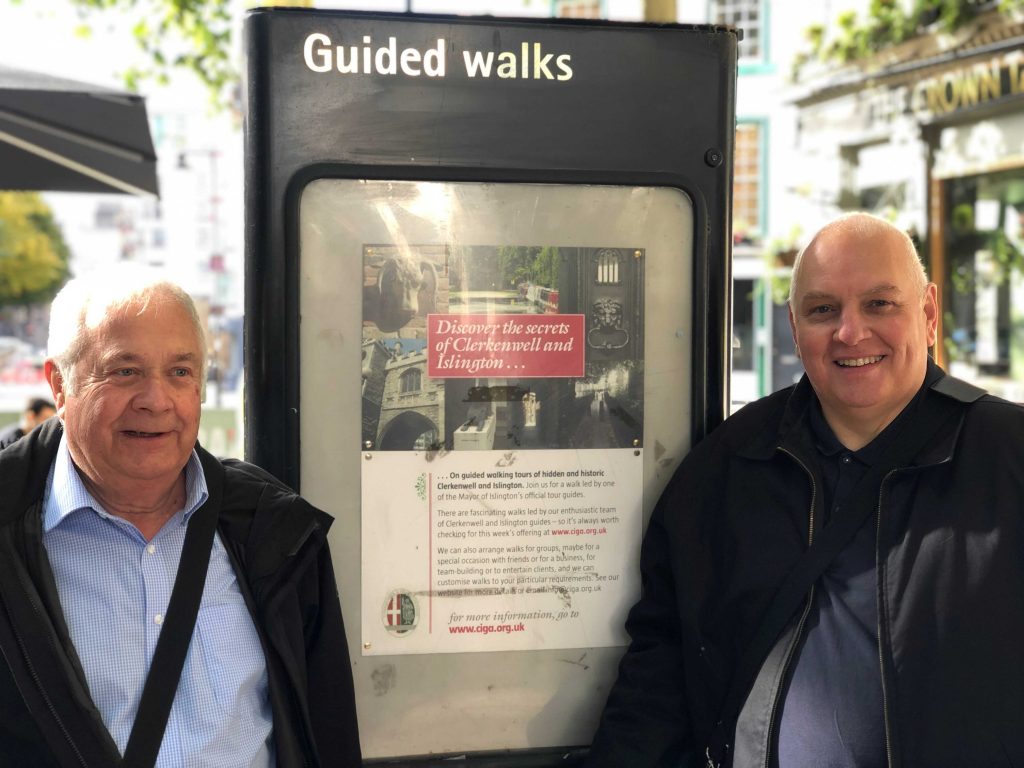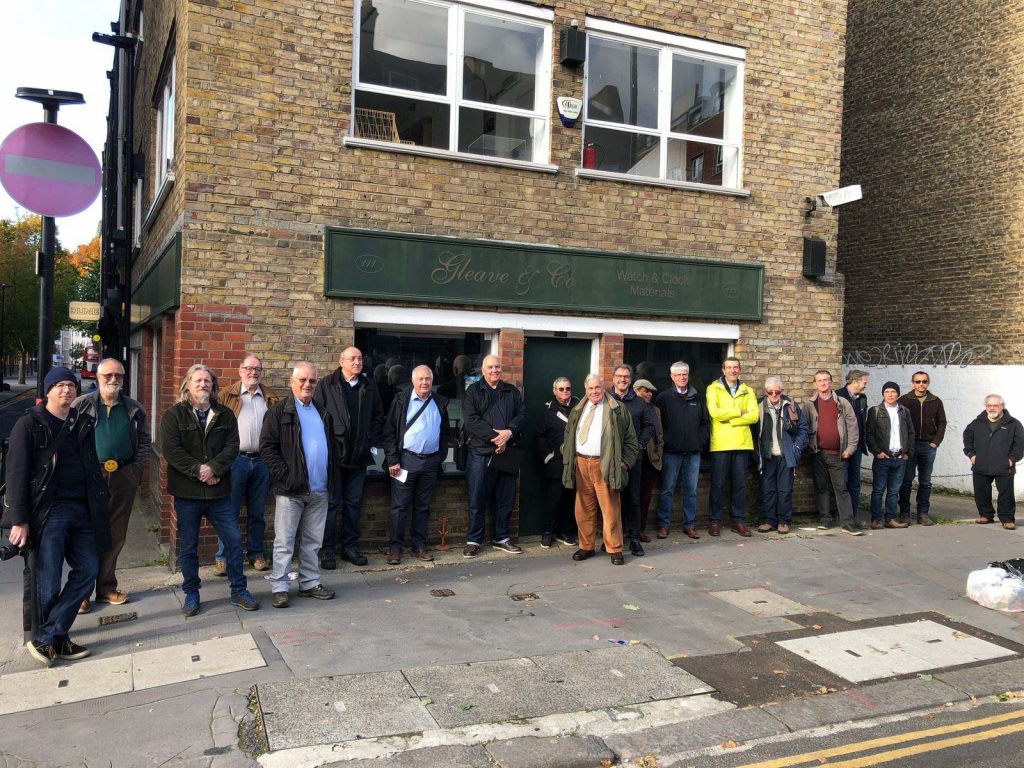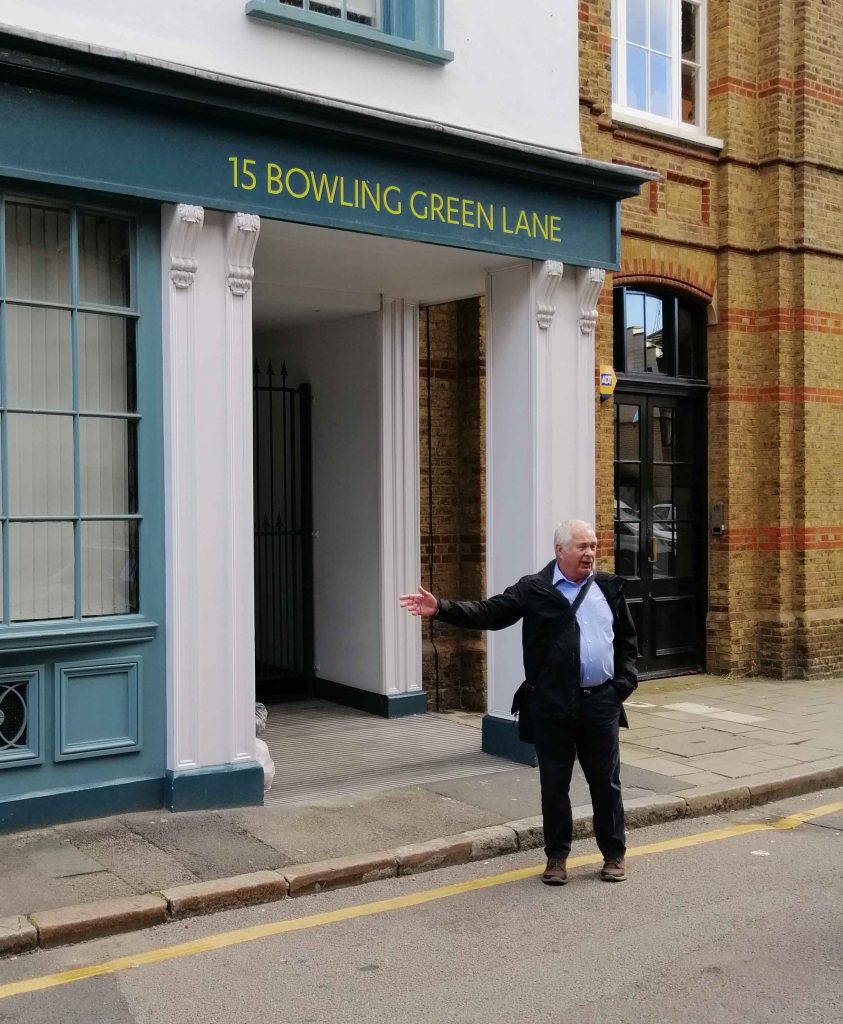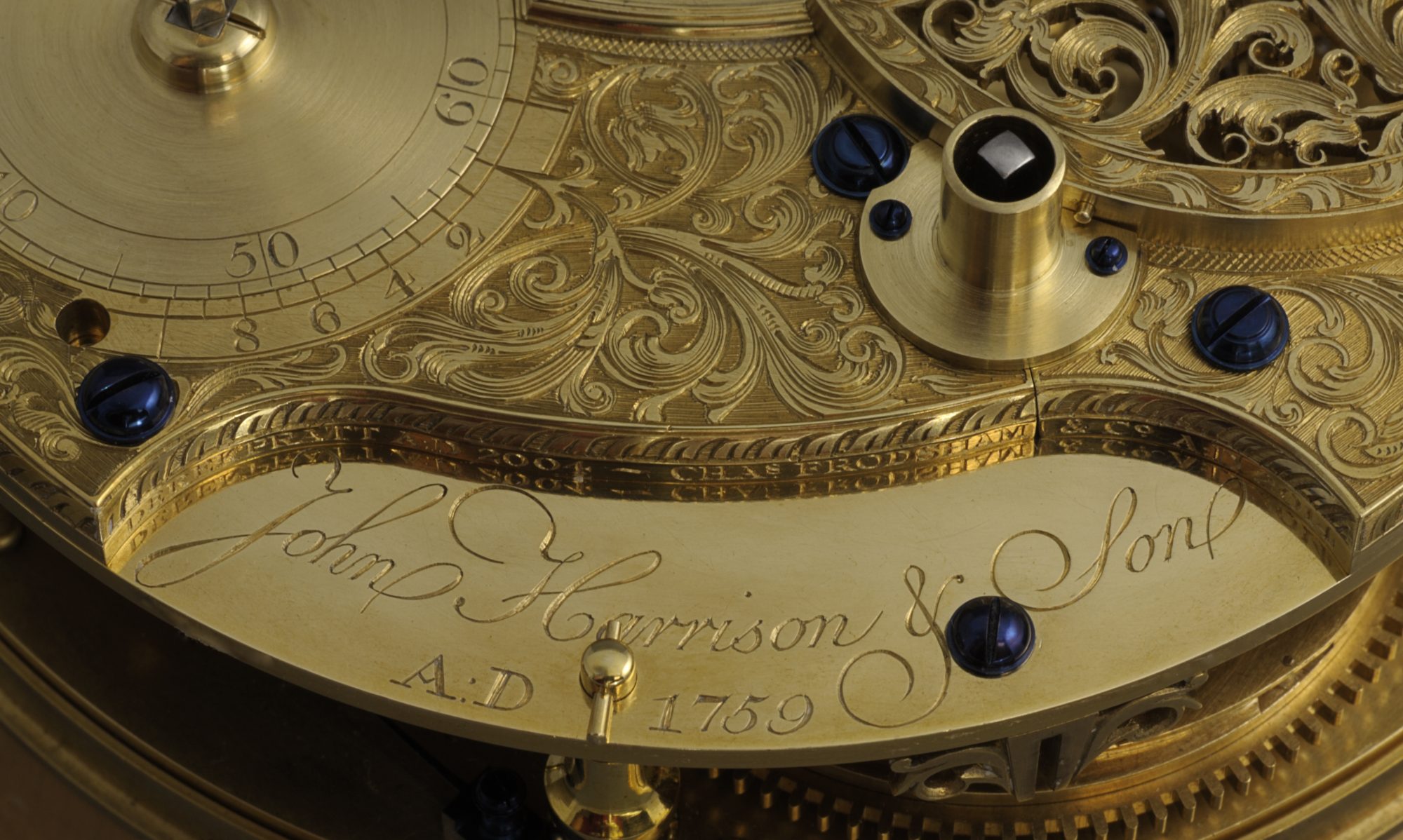‘Memories of Clerkenwell’
A Walking Tour
On the morning of Sunday 24th October over twenty South London Branch members gathered in Clerkenwell for a remarkable walking tour, led by Ron Rose and Rob Wren, which brought to life their recent lecture to the branch.

Heading south on St John Street, and close to the main junction with Clerkenwell Road, they viewed the former premises of Strong & Woodhatch the gilders, Thwaites Brothers (dial painters – where business transacted through a hatch was almost entirely conducted on the stairs), A. Lee (watch and clock repair, and the possible location of a tall model Eureka that several remember in a long-standing window display), Gleave & Co (still in business, and therefore a remarkable survivor), and of course probably the best-known landmark, the former Renata House on the north-east corner of the crossroads – home to Shoot & Son Ltd, where many sourced their materials over time. Shoot’s was not just a shop (where you were served first if you were a familiar face) but also a social club. Regular punters lingered long, catching up on personal matters.

Looking at the south side of Clerkenwell road, across from Shoots, Ron and Rob entertained with tales of Mr Ball of the Criterion Stores who resolutely refused to bow to decimalisation, maintaining pricing in the old money, and converting only at the last moment.
Travelling east on Clerkenwell Road the group stood opposite the former premises of Robert Pringle – more like a department store of horology and tools, by contrast with all the small premises.
Back west and south of the crossroads on St John St they viewed No 88, now a restaurant, but famous as Gedge & Co, supplier of lacquers and acids by quart, gallon or other large measure – never the small quantity required. As Ron recalled, there was little need for intoxicants or stimulants when a visit to heady-scented Gedge’s might set one up for the week.
Moving west to St John Square was the site of Berendt Brothers, material dealers – who clearly moved over time, remembered by different people in different locations. Here the group offered additional memories of the building to the south-east corner of the crossing with Clerkenwell Road including the construction of the Tompion 222 replica.
Into Briset Street and to the building owned by Dan Parkes, home also to Sinclair Glass, and A & H Rowley Parkes. Here Dan Parkes, up on the first floor, handled many of the most important Golden Age clocks, and there was much comment on the quantity of parts in so many clocks that could list Briset Street in their DNA.
With a brief detour down Britton Street to see the location of W. Rayment, and then Sinclair Glass before its move to Briset Street, the group entered the northern part of St John Square, known universally to the locals as Smith Square, since the three sides of the square were dominated by the buildings of J. Smith & Sons, major non-ferrous metals suppliers, but also makers of a wide variety of clocks.
From there to Clerkenwell Green the group stopped to admire the external dial and early hands at St James’s Clerkenwell, driven now by a Moore clock that replaced the original Aynsworth Thwaites clock.

The excursion ended outside 15 Bowling Green Lane, former premises of Thwaites and Read, where Ron arrived as a young clockmaker in 1962. He pointed out the windows behind which he and Mr Fox (his supervisor) worked on an upper floor, making the reproduction clocks. We heard about the displacement of people around the building and the turret clock department, with perhaps thirty staff, to the rear at the back of the ground floor. Ron waxed lyrical about his time throughout the mid-1960s at Thwaites, and about the double-sided drum clock that used to project from the front of the building, and which has now been tracked down, and which Ron hopes to reinstall in the near future at a new location.
[An edited report by James Nye FSA]
